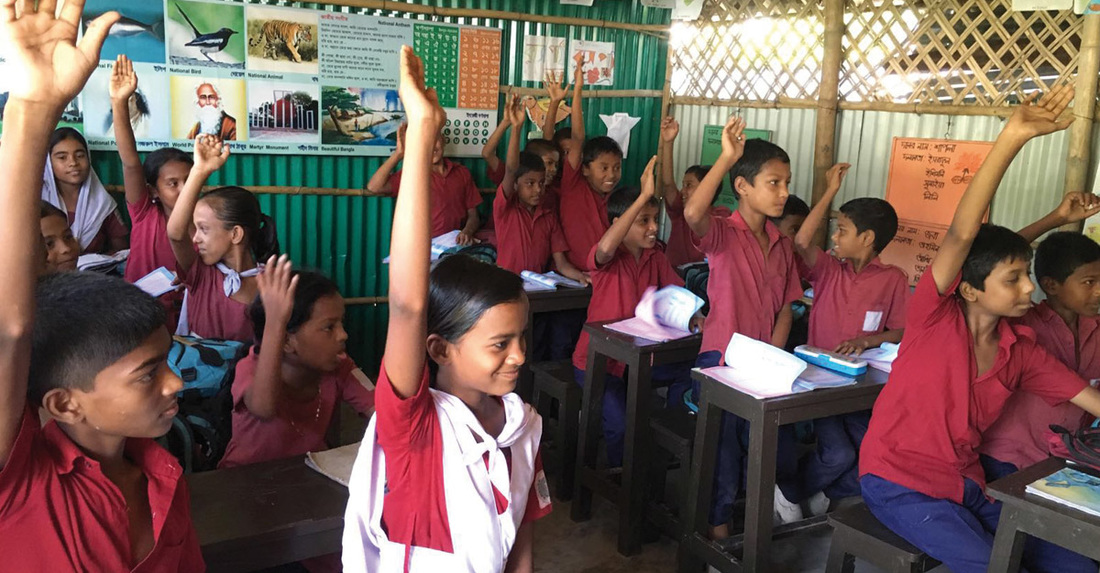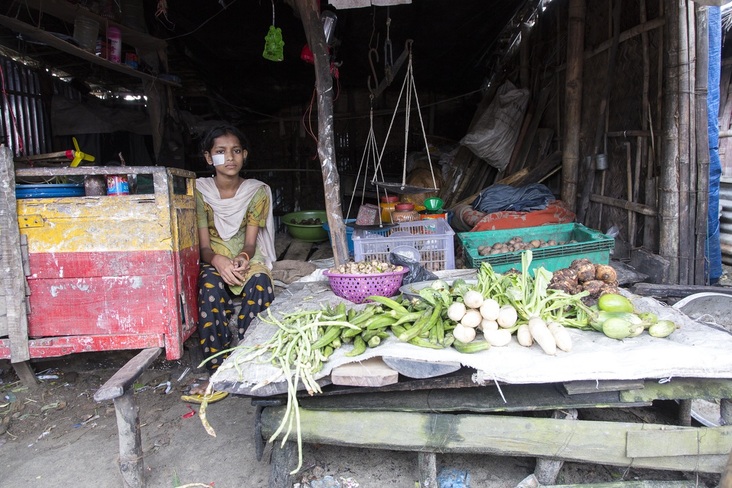|
Today is the World Day Against Child Labour. Launched in 2002 by The International Labour Organization (ILO) this is a day to focus attention on the global extent of child labour and the action and efforts needed to eliminate it. Each year on 12 June, the World Day brings together governments, employers and workers organisations, civil society, as well as millions of people from around the world to highlight the plight of child labourers and what can be done to help them.
Children on the Edge combat child labour through the development of community led child protection, the provision of quality education and, when the need arises we facilitate more targeted work. Although prohibited by the Labour Act (2006), there are nearly 3.2 million working children aged between 5-17 throughout Bangladesh, many in hazardous conditions. Since the collapse of the Rana Plaza building in Bangladesh, which killed over 1,100 garment factory workers and injured some 2,500 more, there has been an increased focus on the ills of child labour and working conditions in the country’s ready-made garment (RMG) sector. What is less focussed on is working children in areas like Cox’s Bazar. Children here work in the fish markets, or along the coast line selling shell bracelets and catching prawns. Some act as tour guides or sell water. These children have no funding or time to attend school, and little chance to enjoy the opportunities that should be inherent in childhood. Many of the schools for working children we support in Bangladesh can be found at the centre of crowded, labyrinthine slums in Cox’s Bazar. The narrow alleys are jammed with tin roofed huts, lines of drying fish, and swarms of mosquitos hover over the puddles left from the last downpour. The people here live on borrowed land, having lost their own homes through the frequent cyclones and floods that occur in this part of the country. The nine schools are modest buildings, bursting with life and colour. Drawings and paintings are strewn over the walls, with creations of all sorts hanging from the ceilings. These children are from some of the poorest families in the world, and have to spend much of their time earning an income for their parents, or even looking after the entire household. Their time here though, is sacrosanct. It’s a time where they can just be children, they can create, learn, play and express themselves, free from the burden of adult responsibilities. On one of our visits we met Kaamil, who loves to sing. He’s exceptionally talented, with a mesmerising voice and a big smile. He is 10 years old and the teacher tells us that later he will have to sing on the beach to make money. “I like to sing, but not to have to go to the beach and sing for money. I wish I did not have to work at all. If I could change anything about my life it would be this.” Kaamil lives in a slum called Kutadiapora. His mother has died and his father left them and does not send any money to help him and his sister. His sister is older, so he lives with her and his brother in law, who earns a little money driving a tuk tuk. We ask Kaamil to describe his an average day, he said “I wake up at 6.00 in the morning, I live in a hut made of tin and fence and there are two rooms. There are four of us here including my cousin. I do like it here because there are trees and I like to sit in them, but the rain causes trouble, the sea rises and floods the slum, it comes into our home. I get to school at 9.00am which I love! My favourite things to do are singing, drawing pictures and playing. After school I have some lunch, and then I go and sing for tourists at the beach. I make 200-300 TK from doing this. The school has even helped with this though, when I earn money on the beach now I can count it. People in our area do not like children who don’t learn, but they respect me now. When I finish the work at the beach I go home and I study and do my homework!”. The flexible community school model meets the educational needs children like Kaamil close to where they live and work, whilst working closely with their families to foster greater understanding of the importance of education. Alongside crucial literacy and numeracy education emphasis is placed upon creative expression and play, with daily time assigned for art, dance or group play. Staff also work alongside children’s families, encouraging long term commitment to and support for their children’s education and consequently a reduction in child labour and child marriage. Find out more about the project Consider donating to this work Share this story with the hashtag #childlabour Support usComments are closed.
|
RECEIVE OUR EMAILSBlog Categories
All
Archives
July 2024
|
|
JOIN US ON SOCIAL MEDIA
|
Annual Report | Contact Us | Jobs | Media Centre | Resources | Shop
Accessibility & Policies: Accessibility | Equity, Diversity & Inclusion Policy | Complaints| Privacy Policy | Safeguarding
Accessibility & Policies: Accessibility | Equity, Diversity & Inclusion Policy | Complaints| Privacy Policy | Safeguarding
Children on the Edge, 5 The Victoria, 25 St Pancras, Chichester, West Sussex, PO19 7LT, UK | 01243 538530 | [email protected]




 Give monthly
Give monthly Fundraise for us
Fundraise for us RSS Feed
RSS Feed
